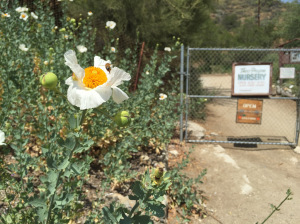Demystifying information on pregnancy, fertility,
and all the things about our ladyparrts
About me
Contact me
Vaginal flora + Native species
My husband and I trekked up to Sun Valley last week to visit the Theodore Payne Foundation nursery. Theodore Payne was a dude obsessed with California’s natural flora and fauna. He loved its native plants. After his death, a foundation continued to honor his commitment to wild flowers and native plants. They have a quaint little house with books and gifties and a great shea cream by Ron the Botanist (I’m a beauty product junkie, if you couldn’t tell by some of my posts!). They grow and sell indigenous plants with a beautiful and well stocked nursery. It’s worth a trip.
Native plants and natural flora thrive in their native environment. Ladies (and gents) have natural flora that lives on and in our bodies, thriving in their native environment too. An obvious place is the vagina (this one’s only for the ladies, of course). Millions of bacteria. All considered part of your normal flora. This is just one interesting fact about the vagina.
Below, 8 interesting facts about the vagina (etc), normal flora included!!
- In human development, the clitoris and the glans penis both originate from the same structure – the genital tubercle. Early on, hormones command that structure to become a penis or a clitoris. Nerves, etc are the same.
- A normal vagina is between 8-12 cm long (about 3-5inches).
- Normal vaginal discharge consists of 1-4 ml of fluid in a 24 hour period. It changes throughout the course of your menstrual cycle – becoming more noticeable around ovulation (probably an evolutionary result – the more discharge you have the easier and more pleasurable sex, the more likely you’ll reproduce. Remember your special sex days? This is ovulation!).
- In each ml of vaginal discharge, up to 1,000,000,000 colonies of bacteria can be found. There are about 25 different types of bacteria that make up these billion colonies. These bacteria are considered part of your normal flora and help maintain an optimal vaginal environment (free of irritation and inflammation).
- Diet, sexual activity, medication, and stress can all affect volume / smell / character of vaginal discharge.
- Vaginal discharge is the most common reason a woman visits her gynecologist. It is impossible for us to evaluate the problem if you don’t have the discharge when you come see us. If you had the discharge last week but now it’s gone, guess what? There’s nothing for us to look at either!
- The most common causes of vaginitis (meaning: inflamed vagina) are: bacterial vaginosis (BV), yeast infection, and trichomoniasis. Don’t know what these are? I’ll tell you about them later.
- Causes of vaginal irritation are numerous: if you can name it, you can add it to the list: scented panty liners, spermicides, condoms, soaps, perfume, semen, lubrication, tampons left in too long. Want to add to the list? Email me and I will.
And there you go! I bet you’ll never look at native flora the same way again!
ADD A COMMENT
May 10, 2016
Original post published:
* Content reviewed annually for accuracy
Leave a Reply
Submit Form
Want to chat more? Email me directly or fill out the form below!
I cannot respond to patient inquiries (insurance, scheduling, requests for appointments) or requests for medical advice.
You can contact my office at (310) 423-1224 for more information.
If you are an existing patient, message me through your patient portal.

Do you find your problem hard for you? Infertile or Heartbroken? Are you finding it difficult looking for a reliable herbal healer to cure your sickness? I say this because I have been helped by Lord Krish Spiritual in restoring happiness into my life. My Mom had been sick with Stage 4 Melanoma Cancer which nearly took her life. I was sad because of this sickness and I didn’t know what to do to save my mother’s life. I would never have met Lord Krish if my friend had not introduced him to me by telling me about a herbalist who has helped so many people worldwide and it’s true. I contacted Lord Krish at lordkrishshrine@gmail.com and within 3 days, I received herbal medicine from him through a courier and I used it on my mom. Within a week, mom was cured and healed. I would advise anyone out there to Contact Lord Krish at lordkrishshrine@ gmail. com and meet him to help you with any sickness you are passing through